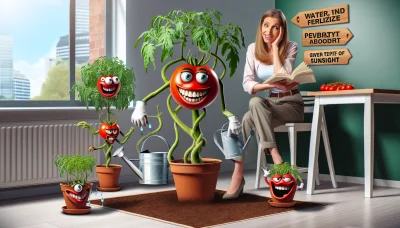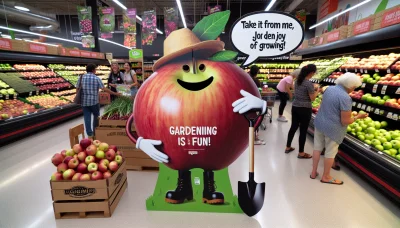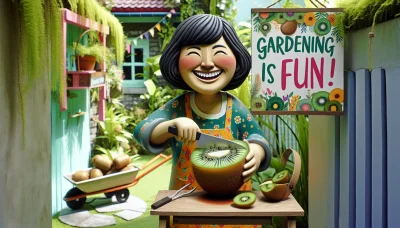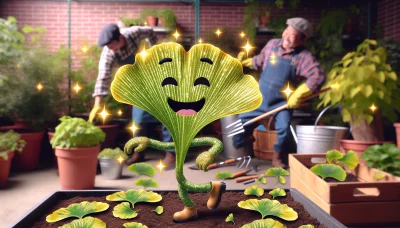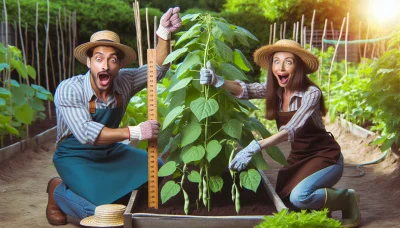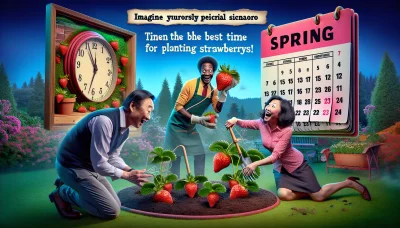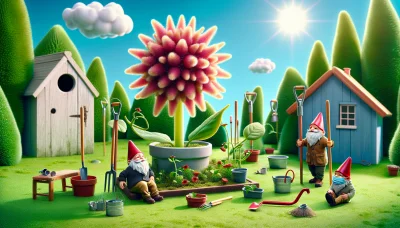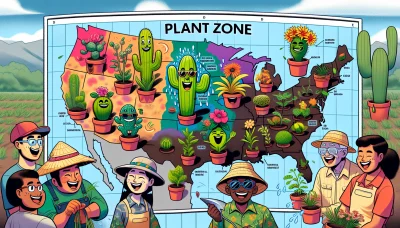Best time to plant tomatoes Quiz
Test Your Knowledge
Question of
Best Time to Plant Tomatoes
Timing is crucial when it comes to planting tomatoes to ensure a successful harvest. Planting too early can expose seedlings to late frosts, damaging or killing the plants. On the other hand, planting too late may not give tomatoes enough time to mature before the first fall frost. The ideal planting time varies by region but generally falls after the last expected spring frost when soil temperatures have consistently reached at least 60°F. Understanding your local climate and weather patterns is key to choosing the right planting time, leading to a fruitful tomato season.
Understanding Your Growing Zone
To find out your USDA Hardiness Zone, a gardener can simply go online to the USDA website and enter their zip code into the provided search tool. This zone classification is crucial for planting tomatoes, as it dictates the best time to plant them outdoors. Each zone has specific temperature ranges that are ideal for different types of plants. By knowing your hardiness zone, you can ensure that your tomatoes are planted at the optimum time, leading to healthier plants and better yields. Understanding your growing zone helps in selecting tomato varieties that are best suited to your local climate, thereby increasing your chances of a successful gardening season.
Optimal Planting Dates by Zone
| USDA Zone | Earliest Planting Date | Latest Planting Date |
|---|---|---|
| 3 | May 15 | June 1 |
| 4 | May 1 | May 20 |
| 5 | April 15 | May 10 |
| 6 | April 1 | April 20 |
| 7 | March 15 | April 1 |
| 8 | February 15 | March 1 |
| 9 | January 30 | February 15 |
| 10 | January 1 | January 20 |
Preparing Your Garden for Tomatoes
Preparing your garden for tomatoes involves several crucial steps to ensure your plants thrive and produce a bountiful harvest. First, it's essential to prepare the soil. Tomatoes prefer well-drained, nutrient-rich soil with a pH between 6.2 and 6.8. Begin by testing your soil's pH and adjust accordingly using lime to raise the pH or sulfur to lower it. Incorporate plenty of organic matter, such as compost or aged manure, to improve soil fertility and structure.
Choosing the right location is equally important. Tomatoes require at least 6 to 8 hours of direct sunlight daily. Select a spot in your garden that receives ample sunlight and has good air circulation to reduce the risk of disease. Avoid planting tomatoes in the same location year after year to prevent soil-borne diseases; rotating your crops is a good practice.
Other pre-planting tips include planning for support structures like cages or stakes, as tomatoes will need support as they grow. Watering your plants deeply and regularly, especially once the fruits begin to develop, is crucial for maintaining healthy plants and preventing blossom end rot. Lastly, consider planting companion plants such as basil, marigolds, or garlic around your tomatoes to enhance growth, flavor, and repel pests naturally.
The Importance of Frost Dates
Determining the last frost date for your area is crucial for planting tomatoes at the right time. Here are steps to help you find out this important date:
- Check with your local cooperative extension office. They can provide you with the frost dates specific to your region.
- Use online gardening resources or frost date calculators. These tools often require you to enter your ZIP code to find the frost dates for your area.
- Consult with local gardeners or gardening clubs. Experienced gardeners can offer valuable insights based on years of observing weather patterns in your area.
- Look at historical weather data for your region. This information can give you a general idea of when the last frost typically occurs.
Understanding the last frost date is essential for planting tomatoes because:
- Planting tomatoes before the last frost date can expose them to cold temperatures, which can damage or kill the plants.
- Knowing the last frost date helps you plan when to start seeds indoors, ensuring they are strong enough to transplant after the danger of frost has passed.
- It helps in scheduling the planting of other garden vegetables that have similar frost sensitivity, optimizing your garden's overall productivity.
Tips for Planting Tomatoes
When planting tomatoes, it's important to consider several key factors to ensure a healthy and productive crop. Firstly, plant your tomatoes deep enough, about two-thirds of the plant should be buried in the soil. This encourages a strong root system. Spacing is also crucial; keep plants about 24 to 36 inches apart to allow for adequate air circulation and growth. Finally, tomatoes require a consistent watering schedule, especially as the fruits start to develop. Aim to water the plants deeply rather than frequently, to encourage roots to grow deeper into the soil, which helps with the plant's stability and nutrient uptake.
Caring for Your Tomato Plants
Tomatoes are a popular and rewarding crop for many gardeners, but they do require some specific care to thrive. To ensure your tomato plants grow healthy and produce a bountiful harvest, consider the following tips. First, tomatoes need plenty of sunlight – aim for at least 6 to 8 hours of direct sunlight each day. Proper watering is also crucial; water the plants deeply and consistently, preferably in the morning to avoid evaporation and diseases. Be careful not to overwater, as this can lead to root rot. When it comes to harvesting, tomatoes are ready when they are firm and fully colored. Regularly checking your plants and picking ripe tomatoes will encourage further production. By following these simple guidelines, you can enjoy a successful and delicious tomato season.

